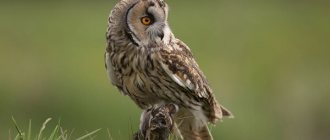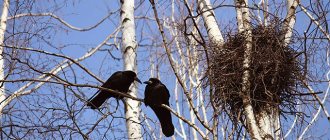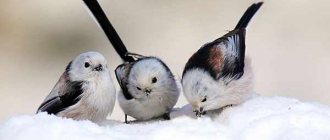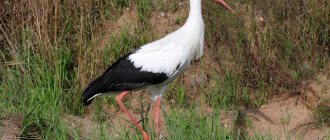How to attract Starlings?
The easiest way to attract a starling is to build a birdhouse; it is usually made of unplaned boards up to 30 cm high. The bird house is hung at a height of 2 to 6 meters. It is best if it is made only from boards without the use of paints.
Interesting materials:
How long can dried hawthorn be stored? How long can freshly squeezed apple juice be stored in the refrigerator? How long can you store pork fat? How long can cheesecakes be stored? How long can Tom Yam be stored in the refrigerator? How long can a cake with fondant be stored in the refrigerator? How long can toast be stored? How long can Trifles be stored? How long can curd buttercream be stored? How long can you store cream cheese in the refrigerator?
Starling: description
Starlings have some similarities with blackbirds, as they have almost the same size, as well as the color of their beaks and plumage.
The starling can be easily distinguished from the thrush, despite some similarities, by its short tail, the presence of a large number of light specks scattered throughout its plumage, and the ability to deftly run along the surface of the ground, while blackbirds move by jumping. With the onset of spring, light specks stand out more in females, but with the onset of autumn this feature is leveled out.
The beak is long and sharp, but within reasonable limits, and is slightly curved downwards. During the mating season, it becomes yellow in color, and in other periods it is almost black. Before puberty, young starlings have brown-black beaks. Young birds are also distinguished by the color of their plumage, which is characterized by brown shades, without the presence of a characteristic gloss. The wings are particularly rounded, and the throat area is lighter.
Interesting moment! The color of the metallic tint of the plumage does not depend on the presence of a coloring pigment, but is associated with the special structure of the feathers themselves. When the angle of inclination of the feathers changes, the tone of the tide may also change, taking on different shades.
Adults grow no more than 22 cm in length and have a wingspan of no more than 40 cm, and weigh no more than 75 grams. Starlings are distinguished by a fairly massive body, a relatively short tail, a well-proportioned rounded head, and reddish-brown legs.
Starlings are divided by experts into several subspecies, depending on their habitat, while the birds differ in the nature of their metallic tint. For European starlings, a green-violet tint is considered characteristic, while for other subspecies a bronze-bluish tint is considered characteristic.
Habitat
These birds are distributed throughout our Planet, with the exception of the territories of Central and South America. At the same time, man helped starlings live in New Zealand, Australia, South-West Africa, and also in North America.
Several attempts were made to resettle starlings in the United States, but they were unsuccessful and only in 1891 the attempt was crowned with success. About a hundred individuals were released in New York's Central Park. And although some of them died, the surviving birds were enough for them to begin to actively reproduce and, as a result, starlings “captured” the entire continent.
Starlings are distributed throughout almost the entire Euro-Asian continent.
It is important to know! The eastern borders of the starlings' habitat reach Lake Baikal, and the western borders extend to the Azores Islands. These birds have even been seen in Siberia.
Starlings living within southern and western Europe remain for the winter in inhabited territories, and birds living in the eastern and northern parts of the European continent fly south with the onset of cold weather.
Despite the fact that starlings do not have special requirements for living conditions, they are not found in mountainous areas, preferring to settle in flat areas, as well as in cultivated landscapes, such as gardens, parks, personal plots, etc. They plan to settle as close to humans as possible, since their vital activity helps in providing these birds with food.
Starling lifestyle
Migrating starlings that return to their usual nesting sites in the spring can expect unpleasant surprises. The main surprise is related to the weather conditions, which during this period are completely unstable and above-zero temperatures easily become below-zero, and snow may fall. Those birds that do not have time to migrate a little further south may simply die.
Males, as a rule, arrive first and begin to look for comfortable places to form their nests. After some time, the females appear, while the males have time not only to take a place for the nest, but also to hone their musical abilities. During this period, they also manage to fight with their neighbors.
When starlings sing, they seem to reach up, opening their beaks wide and fluttering their wings. Despite their vocal abilities, starlings do not always produce harmonious sounds; however, they skillfully imitate the singing of other birds, including subtropical ones. And yet, starlings mainly imitate the voices of birds such as:
- Oriole.
- Larks.
- Jays and blackbirds.
- Reeds.
- Quail.
- Bluethroats.
- Swallows.
- Roosters and hens.
- Ducks, etc.
Interestingly, not only birds are imitated by starlings, since they can easily reproduce the sounds that dogs, cats, sheep, frogs, etc. make.
Starlings make all their sounds quite quickly, after which the performance ends with a shrill squeal and “clinking glasses,” and then the singer falls silent. Older individuals have a more extensive repertoire.
Interesting facts about starlings – Birds of Russia – Film 10
Behavior
Starlings are not exactly friendly birds towards their neighbors, because they constantly fight with other birds for the best places for their nesting. Having appeared in the United States, they displaced red-headed woodpeckers, which were considered a native species, from their usual habitats. Being on the European part of the continent, these birds are constantly at odds with woodpeckers and rollers.
Starlings are birds that are highly sociable, so they always live in large flocks located next to each other. In the air, they also move in huge groups, working absolutely synchronously, both in the air and during landing. Already closer to the ground, this group begins to break up into smaller groups that have managed to choose certain areas for themselves.
It is important to know! Starlings, incubating and then protecting their offspring, are always close to the nest, trying to keep other birds away from it. They feed from fields, vegetable gardens and cottages, as well as the banks of nearby reservoirs.
With the onset of dusk, these birds create large groups and, as part of these groups, go to roost for the night, choosing for this purpose various trees, shrubs, willow or reed thickets. In winter, you can see starlings wandering from place to place in search of food, sometimes in one large flock numbering up to 1 million individuals.
Starling migrations
The colder the living conditions, the more characteristic seasonal migrations are. Starlings living in England and Ireland lead a sedentary lifestyle, but those living in Belgium, almost half of them fly to warmer climes. With the onset of winter, Dutch starlings migrate south, almost 500 km, and only a fifth remain to spend the winter in their homeland.
The first individuals are ready to migrate at the beginning of September upon completion of the autumn molt. The bulk of birds go south in October, and only some of the individuals migrate in November. Lonely young starlings form flocks to move to more comfortable living conditions as early as July.
Starlings living in East Germany, the Czech Republic and Slovakia, for the most part, go south to warm countries and only a small proportion of 2.5 to 8 percent remain for the winter in their homes.
Almost all starlings living in eastern Poland, northern Scandinavia, and northern Ukraine are migratory birds. As a rule, they wait out the winter in the south of Europe, in India, in the north-west of the African continent, etc., and they have to cover a distance of 1 to 2 thousand kilometers.
Interesting fact! Migratory starlings, which appear in the southern countries in tens of thousands, seriously annoy the residents of these countries, or rather the population of many cities. For example, residents of Rome prefer not to go outside in the evenings, where birds, having settled in parks and squares, emit such loud voices that they drown out the engines of cars driving along the streets of Rome.
Some individuals return to their native places at the beginning of March, when there is still snow outside. At the end of April, birds appear, whose habitat extends to colder regions.
How long do starlings live?
It has been reliably established by some ornithological scientists that, being in the wild, starlings live for almost 12 years.
What do starlings eat?
Twelve years of life for a bird like a starling is a serious period. This is mainly due to the omnivorous nature of the bird, since the diet includes various nutritional components of both plant and animal origin. The diet of starlings includes:
- Earthworms.
- Snails.
- Larvae of various insects.
- Grasshoppers.
- Butterflies and caterpillars.
- Symphylae.
- Spiders.
A flock of starlings can cause a lot of harm, since they raid fields where grain crops are grown, vineyards, eating berries, summer cottages and garden plots, eating both fruits and seeds of many cultivated plants.
Interesting moment! Starlings have learned to extract the contents from fruits covered with a strong shell. To do this, they insert their sharp beak into the smallest hole, opening the shell with their beak.
Reproduction and offspring
Starlings that do not migrate south begin to mate in early spring, while migratory starlings begin to mate after they return to their native places. The duration of the mating season depends on weather conditions, as well as on the availability of food.
Starlings build their nests in tree hollows, in birdhouses, or in the frames of the nests of larger birds, such as herons, eagles, etc. When the nest site is determined, the male begins to sing, attracting the female. His singing also signals that the place is already occupied.
The construction of the nest is carried out by both the male and the female. Stems, leaves, feathers, wool and other natural building materials are used to form it.
Starlings, when attracting females, can fertilize several females in turn. Related to this is the fact that starlings make up to 3 clutches of eggs per season, with the last clutch being made 40-50 days after the first. Each clutch consists of 4-7 eggs, light blue in color, weighing 6 and a half grams each. The incubation period for the eggs takes up to 13 days, after which the chicks are born. Both parents are involved in incubating the eggs, although mostly the female sits on the eggs, and the male occasionally replaces her. The fact that starlings have chicks can be recognized by the remains of the shell that appear next to the nest.
Both parents also feed their offspring, making dozens of flights per day in search of food. As a rule, they rest at night, and at dawn they make their first flights.
At the initial stages of development of the offspring, the parents of the chicks feed them soft food, gradually moving to rougher food. In less than 3 weeks, the chicks can independently leave their parents’ nest. To lure their offspring out of the nest, they circle around it with food clutched in their beaks.
Behavior and lifestyle
The common starling is a bird that uses a “secondary cavity nest,” that is, it requires natural or artificial cavities to construct its nest. Due to their rapidly increasing numbers and aggressive behavior, they are displacing native birds that historically used cavities as nesting sites. This has led to declines in the populations of wrens, swallows and bluebirds.
Photo: Martin Grimm
Starlings are flocking birds . They nest in colonies, feed and migrate in large groups. Males use a wing-flapping technique (where the wings open halfway) to attract the attention of females. Males also impress their partners by singing sonorously and decorating their nests with a flower or a tuft of grass. When a female is fertile, her male closely watches his competitors. The male follows the female in all her actions, carefully protecting her from attacks.
Another notable aspect of the starling's behavior is its relationship with people. In addition to being very social with their conspecifics, starlings also coexist freely with people in urban areas.
Lifespan and predation
In the wild, starlings live up to 12 years , although one starling lived for 15 years and 3 months. The maximum lifespan of captive starlings can be expected to be somewhat longer than this.
Photo: lma82
Starlings usually gather in large flocks, except during breeding season. Grouping helps protect against predators because more birds can watch for approaching predators and quickly alert others of danger. The main predators are falcons, peregrine falcons, hawks and domestic cats.
Reproduction method
In the spring, having flown from southern countries, starlings enter the mating season. In European and Asian countries, they manage to hatch chicks three times from spring to autumn. To do this, the birds are divided into pairs. Then they look for nesting places and bring dry parts of plants there. Moss, feathers, and grass are placed on top of the bird. A male can court several females at once.
The first clutch of eggs can contain from 6 to 10 eggs. The female lays eggs once a day. Then she hatches them. The eggs are light blue in color and reach 3 cm in length and 2 cm in width. The weight of one is 6.5 g.
Sometimes the female is replaced by a male while incubating the offspring. Chicks are born on days 11-13. They are completely naked and blind. At first they behave completely silently. As soon as the parents threw the egg shells out of the nest, the chicks appeared. Adults begin to look for food for their offspring. They bring insects to the chicks, which is a complete protein food. Parents can fly for food up to 300 times per day. After three weeks of life, the chicks make their first flight. Parents use various tricks to lure them out of the nest.
Eating habits
The omnivorous starling can adapt to consuming numerous types of food. It uses an "open-beak palpating" technique, which allows it to access food protected by tough skin or shell. Birds insert their beaks into the prey, gradually opening it, thereby exposing the food that is inside.
The starlings' diet consists mainly of grains, terrestrial arthropods (usually insects and spiders), small vertebrates and invertebrates, plants and fruits.
Photo: Marina Gorbunova
The most common animals eaten by starlings are butterflies, centipedes, weevils, grasshoppers, moths, ground beetles and earthworms. These birds do not disdain carrion. The most popular plants are berries, seeds, nuts, plums, rowan, apples, pears, cherries and elderberries.
Is the nightingale a migratory bird?
It is no secret that the nightingale looks similar to the lesser starling. Therefore, many are interested in whether the nightingale and starling are migratory birds or not.
Nightingales are birds from the order Passeriformes. This is a small bird with brownish plumage, a reddish tail, dark eyes, and long legs. Thanks to its singing talents, the nightingale has become a symbol for many writers and poets. Many people say that this little bird doesn’t just sing, but sings. The singing is particularly sonorous and has a large number of intonations.
There are more than 20 species of nightingales. The most common is the common nightingale. It is a migratory bird and goes to Africa for wintering. Nightingales settle mainly in dense bushes, near rivers or lakes. In April, nightingales return to their nesting sites. They immediately make themselves known with their flute-like, clicking and crackling singing at night or at dawn.
Spread range
Geographical distribution
Photo: Wikipedia
The common starling is a cosmopolitan avian type , found in all six biogeographic regions of the world, with the exception (for now) of the neotropical regions. Dispersed primarily throughout their native Palearctic region (from the Azores in the west and central Siberia in the east to Norwegian territory in the north and the Mediterranean in the south), starlings were introduced to the North American continent in 1890.
Of the hundred individuals released in New York, only fifteen pairs survived. Over the next century, the birds' numbers increased a million times their original fifteen pairs. Due to their wide range of environmental tolerances, these birds have been able to rapidly expand their distribution range throughout the United States. The common starling is now found from the Pacific Ocean to the Atlantic coast (west to east) and from northern Mexico to southern Canada (south to north).
Habitat
Photo: Lauren Glevanik
The common starling is a lowland bird that generally avoids highlands. During the mating season, these birds need burrows for nesting, as well as vast fields of vegetation for feeding. In other periods, the starling significantly expands its range of habitats, from open heathlands to wetlands and salt marshes. Common nesting sites include holes and crevices in trees, buildings and roofs. Starlings also invade the nests of other birds and use them as their own.
- Habitat: temperate
- Terrestrial biomes: savanna or grassland, chaparral, scrub forest, urban, suburban, farmland











